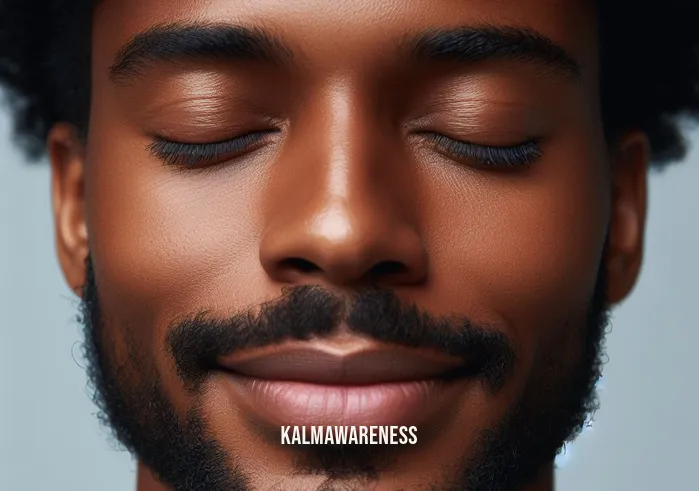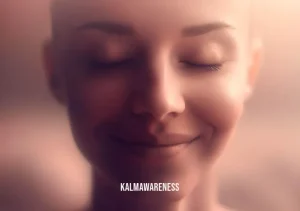Thoughts Are Not Facts: The Key to Shaping Perception
In our everyday existence, navigating through the maze of thoughts and emotions, we often mistake our perceptions for reality. Our mind, a beautiful yet complex entity, constantly processes information, evaluates situations, and crafts narratives based on its interpretations. However, it’s essential to understand that thoughts are not facts. Our perceptions, while real to us, don’t always align with the objective truth. In this introductory segment, we’ll journey through the realm of perception, touching upon mindfulness, the intricate dance between reality and evaluation, and the significance of awareness in our daily lives.
Perception: A Personal Reality
Our brains are constantly bombarded with stimuli. From the teenagers walking in the park to the way we touch that body part when in pain, our senses pick up myriad details. This sensory information then forms the bedrock of our perceptions. But have you ever paused and pondered, “What do these perceptions truly mean?” The reality we perceive is colored by our past experiences, beliefs, and emotions. Remember, it’s not merely about the data our senses gather, but how our mind interprets them. This is evident when we consider the meaning of ‘pretty soon’, which can vary dramatically based on one’s personal experience and cultural background.
Mindfulness: The Art of Living in the Moment
Being present is more than just a buzzword. It’s a way of life, an approach that enables us to navigate our perceptions with clarity. Mindful hypnobirthing and mindful movement sleep are just a couple of practices that underscore the significance of mindfulness in crafting our experience. It teaches us to observe our thoughts without getting attached to them, understanding that they don’t necessarily define our reality.
“To understand the immeasurable, the mind must be extraordinarily quiet, still.” – a judgement of the wise
Reality vs. Evaluation: The Mind’s Tug-of-War
It’s astounding how quickly our mind jumps to conclusions. We’re often not just content with observing; we evaluate, judge, and sometimes even berate. This is especially true when it comes to our self-worth and identity. However, practices like rouse yoga or engaging in sustainable self-care can help bridge the gap between reality and evaluation. They allow us to stabilize our emotions, helping us spell ‘stabilize’ in our lives metaphorically, ensuring we’re grounded and not swayed by transient thoughts.
Awareness: The Beacon of Clarity
To differentiate between perception and reality, awareness is key. It involves attaining a peaceful state of mind unoccupied by worry, where we’re equipped to dissect our thoughts and discern their origins. Tools such as mirror gazing for spiritual benefits or learning how to train your mind to be stronger than your feelings can foster this self-awareness, ensuring we don’t accept every thought as an absolute fact.
In our quest to understand the intricate tapestry of our mind and perceptions, it’s imperative to remember that thoughts are transient. They come and go, but the essence of who we are remains constant. Embracing practices that promote mindfulness, grounding our understanding of reality, and fostering awareness will set the foundation for a life where we’re in control, not our fleeting thoughts.
As we venture deeper into this topic in the following segments, we’ll dive into the realms of breathing, meditation, and how they can further bolster our understanding and control over our perceptions.
Excited to dive deeper? Continue reading to unearth the magic of breathing and meditation in shaping our perceptions and understanding that thoughts, indeed, are not facts.

Understanding the Impermanence of Thoughts
As we delve deeper into the philosophy of thoughts are not facts, it becomes essential to distinguish between fleeting perceptions and enduring truths. This chapter sheds light on the transient nature of thoughts, their potential impact on our well-being, and the tools we can harness to discern reality from mere perception.
The Transient Nature of Thoughts
Thoughts, like waves in an ocean, rise and recede. They come uninvited, linger for a while, and then fade away. Grasping this idea is pivotal to understand that our thoughts:
- Are not permanent fixtures in our minds.
- Can be influenced by external factors, like reading an article about how we get deep so fast.
- Aren’t always rooted in reality; for instance, misinterpreting one for each blessed day as a sign or omen.
- Need not dictate our emotions or behaviors.
Recognizing these nuances helps solidify the notion that notions are transient.
The Impact of Unexamined Thoughts on Well-being
Unchecked, our unexamined beliefs can lead to anxiety, misconceptions, and even distorted realities. For instance, thinking that meditation is made simple might make us overlook its intricacies and depth. Or believing that you can meditate lying down might limit our exploration of various meditation postures and their unique benefits.
Tools for Discerning Reality from Perception
Various tools and exercises can help us distinguish between thoughts and facts. From the time-tested methods shared in Jack Kornfield’s meditation for beginners to the nuanced approaches of elemental meditation exercises, one can find myriad ways to enhance awareness and understanding.
A Comparative Overview of Thoughts and Facts
| Criteria | Thoughts | Facts |
|---|---|---|
| Nature | Fleeting and variable | Constant and unchanging |
| Influences | External stimuli, emotions, past experiences | Empirical evidence, verifiable information |
| Impact on Emotions | Can evoke strong emotional responses, both positive and negative | Often neutral unless linked with personal beliefs |
| Subject to Interpretation? | Yes | No |
| Example | Believing gratitude leads to better sleep without personal experience or research | Research that conclusively proves the benefits of gratitude on sleep quality |
Recognizing the stark differences between thoughts and facts, as highlighted in the table above, is a significant step in our journey towards self-awareness and understanding.
In conclusion, thoughts, while powerful, are not concrete truths etched in stone. They’re malleable, ever-changing, and subject to our personal biases and the world around us. As we navigate our life’s journey, it becomes crucial to remind ourselves of this fact, using it as an anchor in moments of doubt, anxiety, or confusion.
As we anticipate the next chapter, we’ll journey into the heart of mindfulness practices, unveiling the myriad ways in which they can empower us to better discern thoughts from facts, ensuring a life led with clarity and purpose. Stay tuned, and continue reading for insights that promise to be transformative.

Drawing Inspiration from the Intangibility of Thoughts
Hope often dawns when we release the hold of transient thoughts and embrace the concrete reality. In this chapter, we explore the power of recognizing that thoughts are not facts and the inspiration that arises from understanding this truth. By embracing this mantra, we can navigate through life’s challenges with a sense of purpose and hope.
Quotes that Illuminate the Journey
Throughout history, wise minds have touched upon the nature of our thoughts and the necessity to detach from them. Here are some quotes that resonate with our topic:
- “Do not be led by your feelings and thoughts; instead, be led by truth and fact.” – Unknown
- “Thoughts come and go. Facts stay unchanged. Know the difference.” – Anon
- “Reality is not shaped by your feelings or wishes, but by facts.” – Jane Goodall
- “To conquer oneself is a greater victory than to conquer thousands in a battle.” – Buddha, emphasizing the importance of mastering one’s thoughts.
These insights not only underscore the significance of distinguishing thoughts from truths but also inspire us to cultivate a resilient mindset.
Inspirational Stories: From Thought to Fact
Maria’s Climb
Maria, a young mountaineer, was often plagued by self-doubt. Every time she set her eyes on a challenging peak, thoughts of failure clouded her mind. After attending a mindful hypnobirthing session not related to climbing but focused on releasing fears, she realized that these thoughts were not reflections of her abilities but mere manifestations of her apprehensions. Embracing the mantra that thoughts aren’t facts, she successfully scaled three major peaks in two years. Her story is a testament to the power of discerning reality from mere perception.
Jacob’s Brush with Meditation
After a traumatic accident, Jacob grappled with intrusive thoughts. Through the sustainable self-care practices he learned, and with the help of Rouse Yoga, he discovered the art of mindfulness. He realized that by treating his thoughts as guests rather than permanent residents of his mind, he could heal faster. His journey highlights the importance of understanding that thoughts, no matter how overpowering, aren’t absolute truths.
Judgement and Its Roots
Many a time, our thoughts are a reflection of our judgments, either of ourselves or of the world around us. These judgments often have no grounding in reality, as discussed in judgment of the wise. By acknowledging that our thoughts and beliefs are subjective and malleable, we can cultivate a balanced perspective and avoid unnecessary distress.
The Mirror of Reality
A technique to distinguish thoughts from facts is mirror gazing. The spiritual benefits of mirror gazing extend to helping individuals confront and release unfounded beliefs about themselves. By looking into one’s reflection and challenging each negative thought with factual evidence, many have found a clearer understanding of themselves and their inherent worth.
In wrapping up this chapter, we’ve explored the inspiration that arises from comprehending that our thoughts, however strong, are not always rooted in reality. Recognizing this truth opens up a realm of possibilities, empowering us to lead lives filled with purpose, clarity, and hope.
As we transition to the next chapter, prepare to delve into practical exercises and rituals that can help solidify the understanding that thoughts are not facts. Continue reading to discover tools that can transform your perception of reality and strengthen your mental resilience.

Deconstructing the Complexity: Thoughts Aren’t Concrete Realities
Understanding that our thoughts don’t always depict objective realities can be transformative. As we venture deeper into the realm of mindfulness, it becomes imperative to deconstruct the essence of the phrase “thoughts are not facts.” This chapter will employ bullet points and lists to simplify and provide clarity on this profound concept.
The Nature of Thoughts
Our mind is an intricate web of perceptions, memories, and emotions. Let’s break down the characteristics of thoughts:
Transient: Much like clouds, thoughts come and go. Just as you observed in the meditation made simple guide, they are fleeting.
Subjective: Our thoughts are colored by our experiences, biases, and emotions. They aren’t universal truths.
Influenced by External Factors: External stimulants like the media, discussions, and even the way teenagers walk can shape our thoughts.
Not Always Rational: Despite our beliefs, not every thought is a result of logical reasoning. Many arise from deep-seated fears or desires.
Why We Mistake Thoughts for Facts
Humans have a tendency to accept their perceptions as realities. Here’s why we often mistake our thoughts for undeniable truths:
Desire for Certainty: In a chaotic world, our brain seeks order and certainty. This sometimes leads us to accept thoughts as facts.
Cognitive Biases: We’re hardwired with biases. As the judgment of the wise suggests, these biases can cloud our judgment.
Emotional Attachment: We often become emotionally entangled with our thoughts, making them seem more factual than they truly are.
Repetition: A thought, when repeated often, can be mistaken for a fact. This is why practices like gratitude meditation before sleep can reshape our thinking patterns positively.
Benefits of Recognizing Thoughts as Mere Thoughts
There’s immense power in recognizing that thoughts, regardless of their intensity, aren’t concrete truths. Let’s list some advantages:
Improved Mental Health: Less rumination and decreased anxiety.
Enhanced Decision Making: Decisions based on facts rather than emotions often yield better results.
Personal Growth: By detaching from limiting beliefs, one can grow and evolve.
Strengthened Relationships: Less projection of personal insecurities onto others.
Tools to Distinguish Thoughts from Facts
To practically ensure that we don’t get trapped by our thoughts, it’s useful to employ certain tools:
Mindful Breathing: As we learned from the breathing and meditation practices, taking a moment to breathe can provide clarity.
Journaling: Writing down our thoughts helps in objectively analyzing them.
Feedback from Trusted Ones: Sometimes, an external perspective can help differentiate fact from thought.
Questioning the Thought: Asking, “Is this a proven fact or just my perception?” can be enlightening.
In the vast canvas of the mind, thoughts are mere brushstrokes, often not depicting the complete picture. Recognizing this can be the key to a more fulfilling, grounded life.
As we approach our concluding chapter, we’ll reflect upon integrating these insights into daily life, ensuring that we’re not just aware but also actively practicing the wisdom that “thoughts are not facts.” Join us in the next chapter to cement these insights and embark on a transformative journey.

A New Horizon: Recognizing That Thoughts Aren’t Absolute
As we stand on the brink of concluding our expedition into the heart of “thoughts are not facts,” it’s a moment to pause, breathe, and reflect on our journey. We’ve traversed the mind’s intricate landscapes, understood its nuances, and, hopefully, built a foundation to better navigate our daily encounters with myriad thoughts.
Reflecting on Our Odyssey
From the dawn of our journey where we first introduced the element of some meditation exercises to demystify the concept, to diving deep into its mechanics, we’ve been side by side, discovering, learning, and growing. Understanding that our perceptions, while incredibly powerful, are not absolute truths can be the key to unlocking a more serene and grounded existence.
Our expedition further illuminated with real-life stories, drawing inspiration from the journeys of many who harnessed the understanding that thoughts, no matter how overpowering, don’t equate to unyielding realities. Remember the sage advice from Jack Kornfield’s meditation for beginners? It reinforced our belief in the impermanent nature of thoughts.
Cultivating a Renewed Perspective
Let’s cherish some takeaways from our exploration:
Embrace Fluidity: Just as water takes the shape of its container, our thoughts mold based on external influences and internal biases. Recognizing this can lead to mental agility.
Seek Clarity: Practices like mirror gazing and its spiritual benefits can offer moments of profound introspection, helping differentiate between mere thoughts and facts.
Celebrate Growth: The very recognition that thoughts are not facts is a testament to personal growth. Cherish it.
Stay Curious: This journey is just the beginning. There’s a vast realm out there, waiting to be explored and understood.
An Invitation for Further Exploration
The path of self-discovery and mindfulness is endless. Our humble magazine offers many more insights, stories, and techniques. If the idea of distinguishing thoughts from facts intrigued you, you might find solace in understanding how to train your mind to be stronger than your feelings.
Gratitude and Forward-Look
Thank you, dear reader, for accompanying us on this enlightening journey. Your curiosity, engagement, and thirst for knowledge inspire us to delve deeper, research further, and bring to you more such insightful content. As we wrap up this chapter, remember to carry forward the wisdom, apply it, and let it be the beacon guiding you through the ebb and flow of thoughts.
Stay tuned for our upcoming editions where we’ll journey through more realms of mindfulness and self-awareness. Until then, may you tread with awareness, courage, and an understanding heart.





